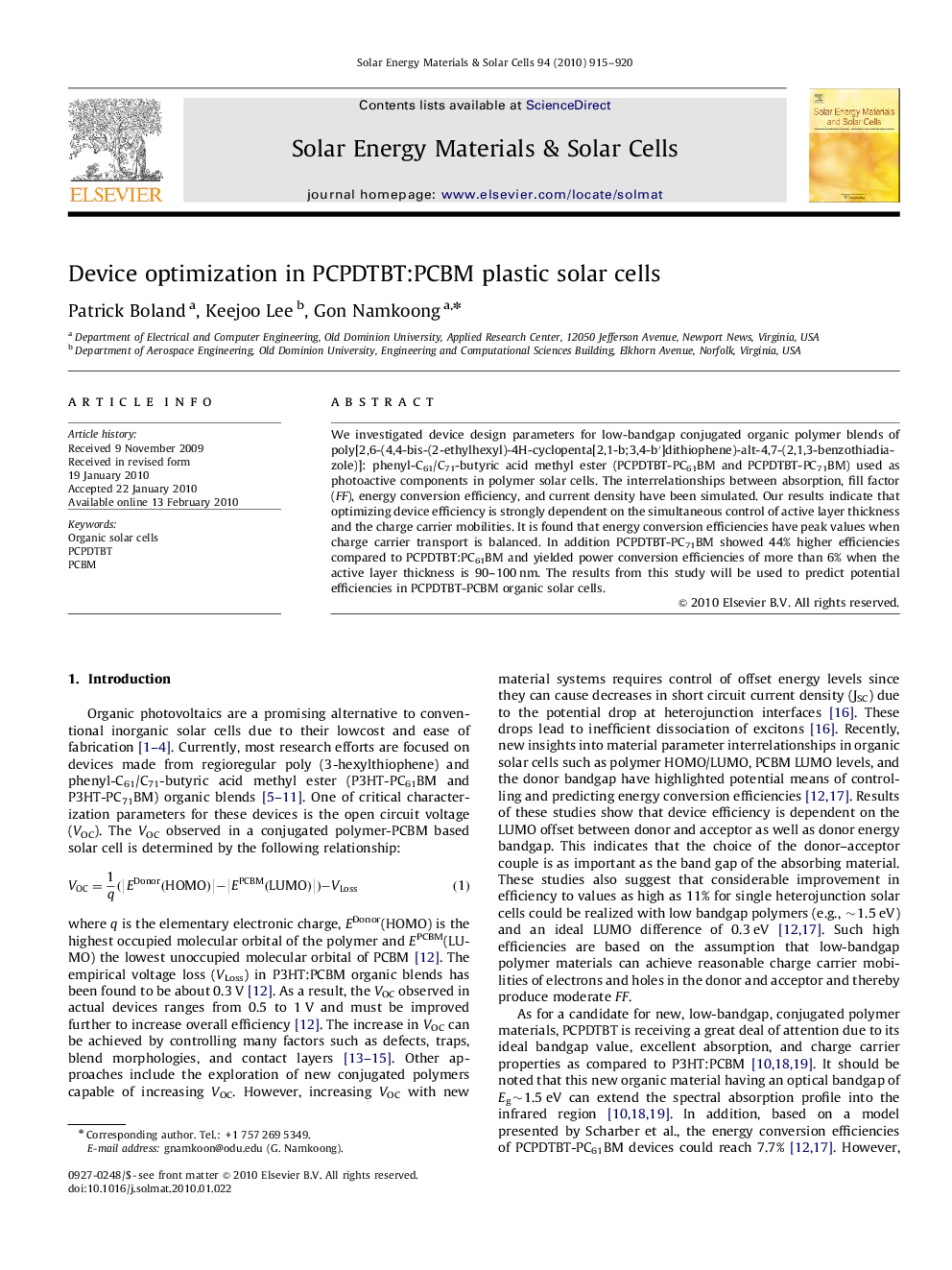| Article ID | Journal | Published Year | Pages | File Type |
|---|---|---|---|---|
| 80112 | Solar Energy Materials and Solar Cells | 2010 | 6 Pages |
We investigated device design parameters for low-bandgap conjugated organic polymer blends of poly[2,6-(4,4-bis-(2-ethylhexyl)-4H-cyclopenta[2,1-b;3,4-b′]dithiophene)-alt-4,7-(2,1,3-benzothiadiazole)]: phenyl-C61/C71-butyric acid methyl ester (PCPDTBT-PC61BM and PCPDTBT-PC71BM) used as photoactive components in polymer solar cells. The interrelationships between absorption, fill factor (FF), energy conversion efficiency, and current density have been simulated. Our results indicate that optimizing device efficiency is strongly dependent on the simultaneous control of active layer thickness and the charge carrier mobilities. It is found that energy conversion efficiencies have peak values when charge carrier transport is balanced. In addition PCPDTBT-PC71BM showed 44% higher efficiencies compared to PCPDTBT:PC61BM and yielded power conversion efficiencies of more than 6% when the active layer thickness is 90–100 nm. The results from this study will be used to predict potential efficiencies in PCPDTBT-PCBM organic solar cells.
